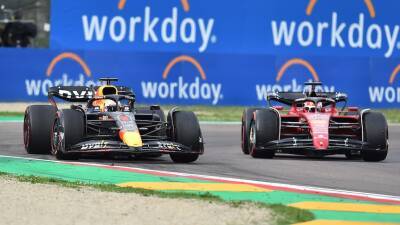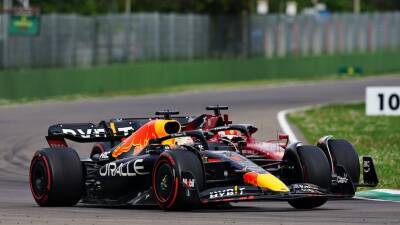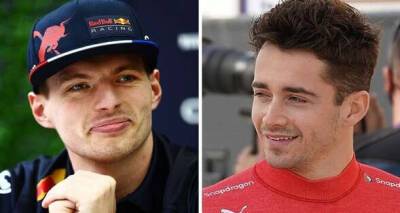Max Verstappen and Charles Leclerc have been gaming F1's DRS this season, with their 'cat and mouse' duel set to continue at the Australian Grand Prix
It's lap 43 of 50 during the Saudi Arabian Grand Prix, and Charles Leclerc and Max Verstappen are battling for the lead.
The pair are approaching the final turn before heading down the main straight when they both brake so hard they almost come to a stop.
Why? Because neither driver wanted to be in first place.
The first two races of the Formula 1 season have delivered the wheel-to-wheel battles fans were promised in the off-season.
But the new regulations which have provided entertaining racing have had a surprising consequence — the Drag Reduction System (DRS) now works too well.
The DRS has been a force for good since being introduced in 2011 but some are now calling for a rethink to stop drivers from actively avoiding the lead of the race.
DRS is a mechanism on a Formula 1 car where a driver can push a button on the steering wheel to open the car's rear wing, reducing drag and allowing the car to go faster.
But DRS can only be activated if a driver is within one second of the car in front, and in a designated zone of the track.
It was introduced to combat the problem of F1 cars not being able to overtake, which was leading to boring racing.
The aerodynamics of the cars had become so complex that the hot, turbulent air left in a car's wake made it impossible for another to follow without losing performance and having its tyres overheat.
So, DRS was introduced to give trailing cars some extra speed to try and pass.
F1 has undertaken one of the largest regulation changes in the sport's history.
New rules governing aerodynamics, as well as larger wheels, have been introduced to allow cars to follow each other closely.
The new rules have worked, with the opening two races of the season producing great wheel-to-wheel racing.
But now





